News
The Surgeon’s Perspective: A Patient Plays His Saxophone During Brain Surgery
Thursday, September 7, 2017
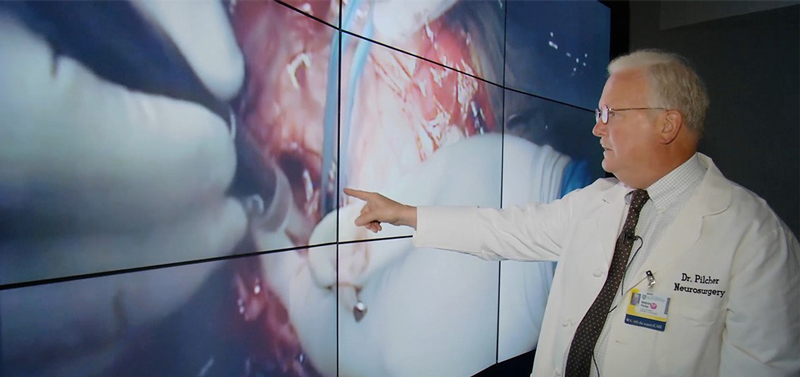
Dr. Webster Pilcher, Chairman, UR Medicine Neurosurgery
As soon as he received the case, Dr. Webster Pilcher knew this could be the surgery of a lifetime. For patient Dan Fabbio, it was.
As a musician who was working towards his master’s degree, Fabbio couldn’t imagine a life without music. And, yet, the possibility was very real.
In the spring of 2015, after weeks of seizures and hallucinations, Fabbio was diagnosed with a brain tumor. Fortunately, it was benign. Unfortunately, it was located in the right side of the brain — potentially near the region specialized in music.
That’s where Pilcher and his team came in.
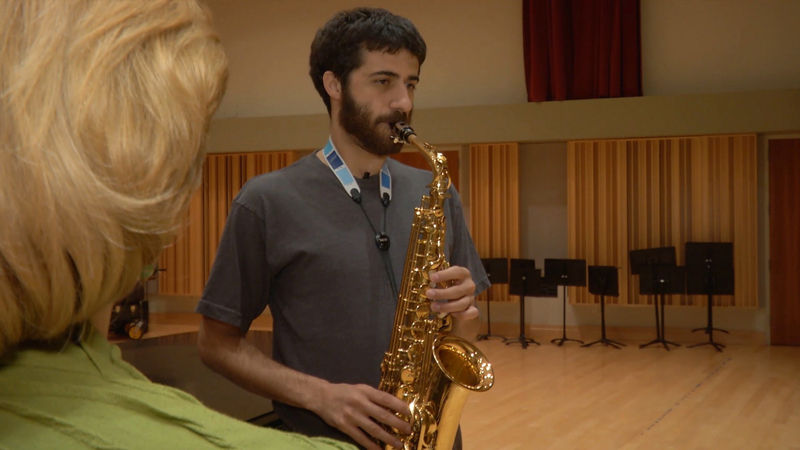
Patient Dan Fabbio, Credit: Univ. of Rochester
At the University of Rochester Medical Center, Pilcher and his colleague, Brad Mahon, Ph.D., co-lead the Program for Translational Brain Mapping. This program combines functional MRI (fMRI) scanning with live electrical stimulation to create patient-personalized brain maps. By having patients engage in activities, such as reading or singing, during these procedures, the team can precisely pinpoint the activated structures of the brain. Utilizing these maps as a guide for surgery, Pilcher hopes to preserve the critical functions most important to a patient, while simultaneously advancing scientific knowledge of the brain.
Pilcher, Mahon, Marvin On NBC News
Tuesday, August 29, 2017
Neurosurgery chair, Web Pilcher, M.D., BCS researcher, Brad Mahon, Ph.D., and Elizabeth Marvin, Ph.D., talked to NBC News (Aug. 29) about their work during a recent brain surgery that resulted in saving a New Hartford, New York resident's musical ability.
This Music Teacher Played His Saxophone While In Brain Surgery
Monday, August 28, 2017
Dan Fabbio was 25 and working on a master's degree in music education when he stopped being able to hear music in stereo. Music no longer felt the same to him.
When he was diagnosed with a brain tumor, he immediately worried about cancer. Fortunately, his tumor was benign. Unfortunately, it was located in a part of the brain known to be active when people listen to and make music.
Fabbio told his surgeon that music was the most important thing is his life. It was his passion as well as his profession.
His surgeon understood. He's someone whose passion has been mapping the brain so he can help patients retain as much function as possible.
Dr. Web Pilcher, chair of the Department of Neurosurgery at the University of Rochester Medical Center, and his colleague Brad Mahon, a cognitive neuroscientist, had developed a brain mapping program. Since 2011, they've used the program to treat all kinds of patients with brain tumors: mathematicians, lawyers, a bus driver, a furniture maker. Fabbio was their first musician.
The idea behind the program is to learn as much as possible about the patient's life and the patient's brain before surgery to minimize damage to it during the procedure.
"Removing a tumor from the brain can have significant consequences depending upon its location," Pilcher says. "Both the tumor itself and the operation to remove it can damage tissue and disrupt communication between different parts of the brain."
Ahead of Fabbio's surgery, it was important to understand exactly what parts of his brain were responsible for his musical abilities. The team spent six months studying the functional and structural organization of Fabbio's brain, Mahon tells All Things Considered host Robert Siegel.
Neurology and Neurosurgery Earn Top 50 Ranking in U.S. News & World Report's 'Best Hospitals'
Wednesday, August 9, 2017

Strong Memorial Hospital’s Neurology and Neurosurgery specialty program has been ranked among the top 50 in the nation for 2017-2018 by U.S. News & World Report. The program ranked 39th among the nation’s hospitals, and this is the seventh consecutive year it has been nationally ranked by U.S. News.
In June, UR Medicine’s Golisano Children’s Hospital was recognized as one of the nation’s best children’s hospitals in three specialty areas — Neonatology, Nephrology, and Neurology and Neurosurgery — in the U.S. News & World Report’s Best Children’s Hospital rankings.
For the 2017-18 adult rankings, U.S. News evaluated more than 4,500 U.S. hospitals; only 152 were ranked in at least one specialty.
Eight Strong Memorial Hospital specialty programs earned High Performing ratings: Cardiology and Heart Surgery, Diabetes and Endocrinology, Gastroenterology and GI Surgery, Geriatrics, Nephrology, Orthopaedics, Pulmonology, and Urology.
U.S. News recognized hospitals that were high-performing across multiple areas of care and ranked them within their states and by metropolitan areas. U.S. News rated Strong Memorial as the top hospital in the Rochester Metro area and fourth among New York state hospitals.
U.S. News evaluates nearly 5,000 hospitals nationwide for its Best Hospitals rankings; methodologies include objective measures such as patient survival, the number of times a given procedure is performed, infection rates, adequacy of nurse staffing and more.
Surviving a Stroke Propels Career in Brain Research
Wednesday, July 26, 2017
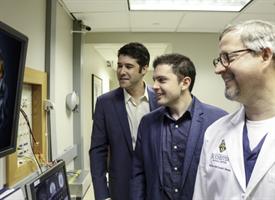
Left to right: Brad Mahon, Frank Garcea, and Edward Vates
On a warm day in July 2005, Frank Garcea’s soccer playing days came to an abrupt end when he suffered what could have been a deadly stroke during a practice with his teammates. Instead, the events of that day and his subsequent treatment – which serve as the basis for a review published in the New England Journal of Medicine (NEJM) – set him on a career path that would ultimately lead to a Ph.D. studying how the brain recovers from injury.
Garcea, who was about to begin his senior year at the Aquinas Institute in Rochester, was in the middle of a training session when he started experiencing a pounding headache. He first suspected he might just be dehydrated on that hot summer day, but soon after his limbs began to tingle and grow numb, his eyes became sensitive to the bright sunlight, and he had difficulty walking. Very quickly it became obvious that something was wrong and someone called 911.
Garcea eventually ended up at Strong Memorial Hospital and was diagnosed with a subarachnoid hemorrhage. He would undergo surgery the next morning under the clinical care of UR Medicine neurosurgeon Edward Vates, M.D., Ph.D.
Subarachnoid hemorrhages account for approximately 5-10 percent of all strokes in the U.S. These occur when a blood vessel in the brain bursts causing bleeding. If not treated immediately, these strokes can cause major disability and, in many cases, death.
“When an aneurysm ruptures, it is an intracranial catastrophe,” said Vates, a co-author of the NEJM article. “In 25 to 50 percent of cases, these strokes result in death, and this estimate does not fully account for patients who die before receiving medical attention.”
Vates uses Garcea’s experience as jumping off point to describe the decision-making process required to diagnose and identify treatment options for subarachnoid hemorrhages.
Golisano Children's Hospital Recognized by US News and World Report
Tuesday, June 27, 2017
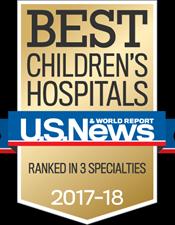
UR Medicine’s Golisano Children’s Hospital has been recognized as one of the nation’s best children’s hospitals in three specialty areas — neonatology, nephrology, and neurology and neurosurgery — in the U.S. News & World Report’sBest Children’s Hospital rankings.
The 2017-2018 rankings, released online Tuesday, placed the children’s hospital’s neonatology program at No. 27 nationally; nephrology at No. 43; and neurology and neurosurgery at No. 44.
“As with everything we do and have achieved, this recognition reflects a partnership with contributions from the interdisciplinary workforces of pediatrics, surgery and surgical subspecialties, emergency medicine, neurology, and obstetrics and gynecology,” said Nina Schor, M.D., Ph.D., pediatrician-in-chief at Golisano Children’s Hospital. “It also wouldn’t be possible without our community, and the health care organizations outside the hospital.”
The Division of Neonatology, which provides care for premature and critically ill newborns, admits about 1200 infants per year. Approximately 1 in 12 babies born in the Finger Lakes Region spend their first days in the children’s hospital’s Gosnell Family Neonatal Intensive Care Unit (NICU), which is the region’s only Level IV NICU.
UR Medicine Recognized for Stroke Care
Tuesday, June 27, 2017
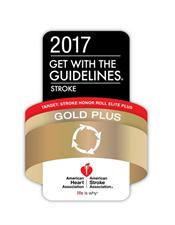
The American Heart Association/American Stroke Association (AHA/ASA) has once again honored the UR Medicine Strong Memorial Hospital as having met its highest standards of care for stroke.
Strong Memorial Hospital has received the AHA/ASA Get With The Guidelines program’s Stroke Gold Plus Quality Achievement Award. The hospital was also tapped for the Target: Stroke Honor Role Elite Plus, which recognizes hospitals that have consistently and successfully reduced door-to-needle time – the window of time between a stroke victim’s arrival at the hospital, the diagnosis of an acute ischemic stroke, and the administration of the clot-busting drug tPA. If given intravenously in the first three hours after the start of stroke symptoms, tPA has been shown to significantly reduce the effects of stroke and lessen the chance of permanent disability.
“This recognition is a testament to the hard work of our outstanding team of nurses, physicians, and therapists and their dedication to provide the highest quality of care to stroke victims,” said neurologist Curtis Benesch, M.D., M.P.H., the medical director of the UR Medicine Comprehensive Stroke Center.
“This award reflects a singular focus on improving the care stroke victims receive from the first 911 call to when they arrive at the hospital through operating room, neurocritical care, and rehabilitation,” said Tarun Bhalla, M.D., Ph.D., the surgical director of the Comprehensive Stroke Center.
Strong Memorial Hospital is home to the region’s only Comprehensive Stroke Center, a designation by the Joint Commission that indicates that the hospital either meets or exceeds the highest standards of care required to provide timely and comprehensive care to patients with complex cerebrovascular disease.
The AHA/ASA Get With the Guidelines program recognizes hospitals that have reached aggressive goals of treating stroke patients and comply with core standard levels of care. For more information about the Get With The Guidelines program, visit the AHA/ASA website.
Depressed Patients More Likely to be Prescribed Opioids
Tuesday, June 20, 2017
A new study shows that patients with low back pain who were depressed were more likely to be prescribed opioids and receive higher doses. Understanding these prescribing patterns sheds new light on the current opioid epidemic and may help determine whether efforts to control prescription opioid abuse are effective.
“Our findings show that these drugs are more often prescribed to low back pain patients who also have symptoms of depression and there is strong evidence that depressed patients are at greater risk for misuse and overdose of opioids,” said John Markman, M.D., director of the Department of Neurosurgery’s Translational Pain Research Program at the University of Rochester Medical Center (URMC) and senior author of the study which appears in PAIN Reports, a journal of the International Association for the Study of Pain.
Low back pain is a leading cause of disability in the U.S., the most common condition for which opioids are a prescribed treatment.
Using data from the Medical Expenditure Panel Survey, a federally-compiled set of large-scale surveys of families and individuals, their medical providers, and employers across the U.S., the researchers compiled opioid prescription data from 2004-2009.
Featured in The Science Times: How Alzheimer's Catches People Skimping Sleep: New Study Explains Cause Of Dementia
Wednesday, May 24, 2017
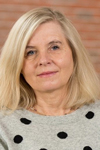
A recent scientific study shows that insufficient amount of sleep leads to the development of Alzheimer's disease. Researchers gain more evidence and are beginning to believe that lack and poor quality of sleep results to the fusion of Amyloids, proteins that bond together to form Alzheimer's plaques.
Dr. Maiken Nedergaard, the lead researcher from the University of Rochester Medical Center, explains the glymphatic system that is present in humans. She says that this system is 10 times more active when in slumber than when awake. The process allows cerebrospinal fluid to flow through spaces around the neurons of people's brains. This a method of purging unwanted proteins (Amyloids) and other wastes into the circulatory system garbage collectors and eventually flushes it out of the body.
In simple terms, Nedergaard explains that the brain has its own sanitation and public works department. It is like a network of sewer facilities mostly done during the brain's nightlife. An example of a housekeeping staff descending to building offices for a cleanup duty to avoid the lumping compound that causes Alzheimer's.
A Sprinter’s Marathon
Friday, May 12, 2017
It was early February when Lockard, shortly into her second track season at Rochester, decided to earn a little extra money by volunteering for a functional magnetic resonance imaging (fMRI) study in the University's Neuroimaging Center.
About 10 minutes into her scan, Frank Garcea, the graduate student running the procedure, told her there was a problem with the machine. He aborted the scan and told Lockard they would have to reschedule.
Shortly after Lockard returned to her dorm room, she received a phone call. The machine was fixed, she was told. When she returned to the center, however, she discovered the machine hadn't malfunctioned. Instead, Brad Mahon, an assistant professor of brain and cognitive sciences and neurosurgery, and the principal investigator of the study, was there to deliver to her in person some troubling news. The scan revealed a mass—approximately 2.4 cm-by-2.4 cm-by-4.8 cm in size—on the lower part of her brain, near the brain stem.
At first, she panicked. Then, after calling home, she went for a long walk in the chill of February in Rochester. "After hearing the news," she recalls, "I needed the long walk outside to finally breathe."
Within days, she met with Howard Silberstein, the chief of pediatric neurosurgery at the Medical Center.
"The tumor was in a tough location, very deep in the cerebellum and up against the brain stem," says Silberstein. "It had probably been developing slowly over Laura's childhood."
Protein Key to Nerve Health Hitches a Ride on Brain’s Garbage Truck
Thursday, March 9, 2017
A new study shows that the brain’s waste removal system serves as both trash collector and delivery service, providing neurons with a protein important to maintaining cognitive function while simultaneously cleaning brain tissue. The research may help explain why different genetic varieties of the protein, called apolipoprotein E (apoE), can indicate risk for Alzheimer’s disease or promote longevity.
The study was led by Rashid Deane, B.Sc., Ph.D., a research professor in the University of Rochester Medical Center Department of Neurosurgery and member of the Center for Translational Neuromedicine, and appears in the journal Molecular Neurodegeneration.
ApoE is responsible for delivering cholesterol to nerve cells in the brain and plays a key role in synaptic plasticity, the process by which neurons build new connections in order to learn and store memories.
G. Edward Vates Named Director of REMS Program
Friday, March 3, 2017
Effective march 1, G. Edward Vates, professor of Neurosurgery, will succeed Flavia Nobay, associate professor of Emergency Medicine, as director of the Rochester Early Medical Scholars (REMS) program Nobay will become SMD's associate dean for admissions July 1.
Vates looks forward to making REMS the premier program for training future scholars in the field of medicine while also enriching the unique opportunities provided to REMS students through the best liberal arts education.
Vates, a native of Wilmington, Del., graduated summa cum laude from Duke University with a B.S. in Zoology. He entered the MD-PhD program at Cornell University Medical College. Vates obtained his Ph.D. in the laboratory of Dr. Fernando Nottebohm at The Rockefeller University, where he studied vocal learning. He received his M.D. degree in 1997 and then completed neurosurgical training at the University of California, San Francisco followed by a fellowship in cerebrovascular and skull base surgery at the Brigham and Women’s Hospital/Harvard Medical School.
Study: Home Care Improves Stroke Outcomes
Thursday, March 2, 2017
Stroke patients who are paired with caregivers that help them transition back to their homes are significantly less likely to be readmitted to the hospital. The results of the pilot study, which showed a 39 percent reduction in the readmission rates of stroke patients at Strong Memorial Hospital, were presented last week at the International Stroke Conference in Texas.
The study was authored by Ann M. Leonhardt Caprio, M.S., R.N., A.N.P. and Curtis G. Benesch, M.D., M.P.H. with the UR Medicine Comprehensive Stroke Center, and Denise Burgen, M.B.A., M.S.N., F.N.P, R.N. with UR Medicine Home Care.
The study focused on one of the measures used by the Centers for Medicare and Medicaid Services to determine quality of stroke care -- whether or not a patient is readmitted to the hospital within 30 days of being discharged after suffering a stroke.
Faculty Reflect on SMH Stroke Center Highlighted in Super Bowl Ad
Wednesday, February 1, 2017
A new ad that will premiere during the Super Bowl focuses on Strong Memorial Hospital’s Comprehensive Stroke Center. You can watch it here. We asked neurologist Curtis Benesch, M.D., M.P.H., and neurosurgeon Tarun Bhalla, M.D., Ph.D., about UR Medicine’s stroke care and what is being done to improve access for patients across the region.
What does SMH’s designation by the Joint Commission and American Heart Association/American Stroke Association as a Comprehensive Stroke Center mean?
Benesch: Designation as a Comprehensive Stroke Center indicates that our center either meets or exceeds the highest standards of care required to provide timely and comprehensive care to patients with complex cerebrovascular disease. Our site has undergone rigorous site visits and annual reviews by the Joint Commission to ensure that we satisfy all the requirements for this designation, including metrics for primary stroke care, surgical stroke care, endovascular care, critical care, longitudinal outpatient care, research, education and outreach.
How does this designation differentiate the hospital from other stroke centers?
Bhalla: All Comprehensive Stroke Centers must provide neurosurgical care, endovascular care, and neuro-critical care. These efforts are enabled in part by a well-established interdisciplinary infrastructure of exemplary stroke care (EMS, emergency medicine, nursing, therapy, and rehabilitation). Although other sites in the region may provide some of these aspects of care, UR Medicine is the only certified Comprehensive Stroke Center in Rochester, reflecting our willingness to submit to the scrutiny of external review to ensure we meet those high standards. It is not just a label but rather a public affirmation of the breadth and depth of a large multidisciplinary team of providers working together.
What is being done to extend stroke care across the health system? For example, if you are a stroke patient and you arrive at a regional hospital supported by UR Medicine, what does that mean for the care you receive?
Benesch: We support all of our regional partners with immediate availability of consultations with experts in Cerebrovascular Neurosurgery, Stroke Neurology, and Neurocritical care. These experts can help in acute treatment decisions and, with our transfer center, can facilitate transfer of patients to Strong Memorial Hospital as needed. Furthermore, we have developed a coverage model to provide 24/7 telestroke consultation to hospitals across the region in an effort to enhance acute stroke care.
Providing timely, appropriate, and comprehensive care for stroke patients requires a high level of coordination and collaboration among caregivers. What is necessary to facilitate communication, coordination, and continuity of care across the team?
Bhalla: First and foremost, the team has to believe in the concept that the more of a difference that we can make up front, the better a stroke patient will fare in the long run. The care they receive from the first 911 call to when they arrive at the hospital is only the beginning of a journey that continues through operating room, neurocritical care, and rehabilitation and is one that will determine how much function a stroke victim will ultimately recover. We all play a part, but everyone must share the same vision. Internally, it means that all the groups that represent the continuum of care must continually focus on ways to improve communication and coordination. But this also requires building awareness and education within the community. People need know how to identify the signs of stroke and EMS providers need to know what to do and where to take patients.
What does the future hold for stroke care?
Bhalla: We are committed to continuing to find creative ways to deliver the highest level of stoke care to patients where and when they need it. This includes working with community providers and partnering with EMS to leverage the resources of our Comprehensive Stroke Center to diagnose and potentially begin treatment for stroke patients even before they reach the hospital.